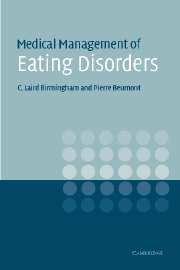Book contents
- Frontmatter
- Contents
- List of color plates
- List of contributors
- List of abbreviations
- Introduction
- PART I THE MEDICAL PERSPECTIVE
- PART II TREATMENT
- PART III SPECIAL ISSUES
- 8 Specific patient populations
- 9 Prepubertal children and younger adolescents
- PART IV THE PSYCHIATRIC AND PSYCHOLOGICAL PERSPECTIVE
- PART V AREAS OF SPECIAL INTEREST
- Bibliography
- Index
- Plate section
9 - Prepubertal children and younger adolescents
Published online by Cambridge University Press: 18 December 2009
- Frontmatter
- Contents
- List of color plates
- List of contributors
- List of abbreviations
- Introduction
- PART I THE MEDICAL PERSPECTIVE
- PART II TREATMENT
- PART III SPECIAL ISSUES
- 8 Specific patient populations
- 9 Prepubertal children and younger adolescents
- PART IV THE PSYCHIATRIC AND PSYCHOLOGICAL PERSPECTIVE
- PART V AREAS OF SPECIAL INTEREST
- Bibliography
- Index
- Plate section
Summary
Based on the physical, psychological, and developmental characteristics of childhood and adolescence, significant differences and similarities may be expected from the adult population. This summary focuses on the negative biological effects and sequelae of eating disorders in children and adolescents. These may encompass effects on growth and pubertal development, and medical complications of different organ systems, including morbidity and mortality. All organs are affected by the protein-calorie malnutrition associated with AN. Similarly, the malnutrition seen with BN results in medical sequelae. Table 9.1 lists the medical complications commonly associated with eating disorders in children and adolescents. In addition, investigations and measurement strategies to assess the medical impact of eating disorders are discussed.
Adolescence may be defined using many different parameters. Chronological age is used most widely in the literature. For the purpose of this chapter, the terms “adolescent” and “youth” will refer to the age group between 11 and 19 years of age. From the philosophical point of view, adolescence may be defined as a time of change that encompasses not only biological changes but also major psychological and social adjustments.
A vast literature related to medical complications in patients with eating disorders already exists for the adult population, serving as AN excellent source of reference for developing adolescents. Some of the previously highlighted differences between these two groups may be categorized based on the physiological hallmarks of adolescent development.
- Type
- Chapter
- Information
- Medical Management of Eating DisordersA Practical Handbook for Healthcare Professionals, pp. 184 - 204Publisher: Cambridge University PressPrint publication year: 2004



